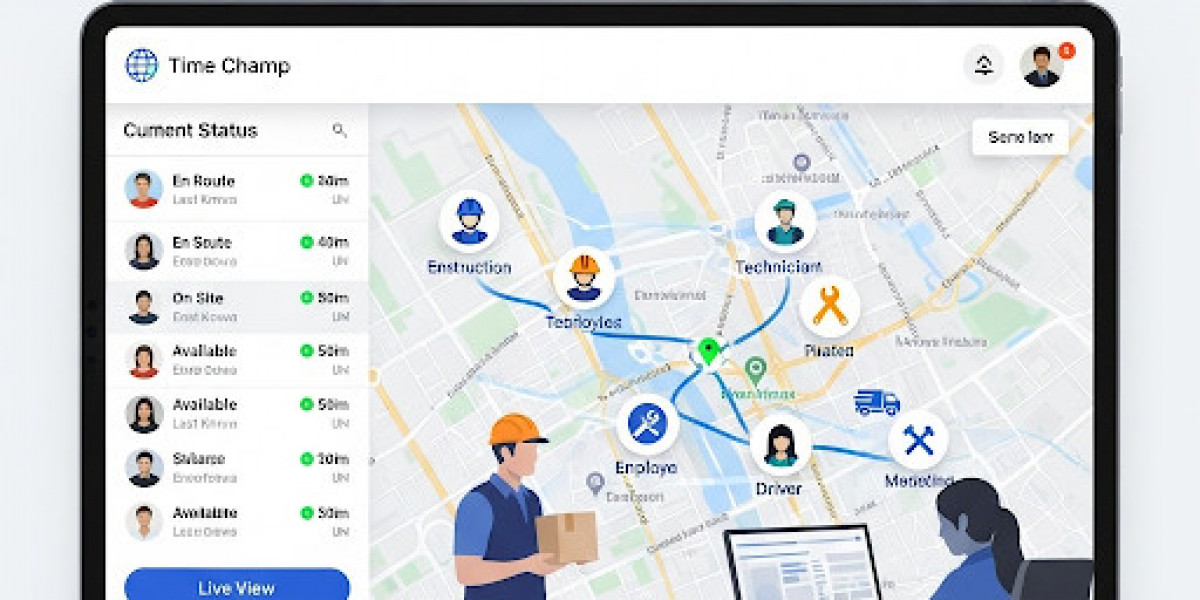In an increasingly dynamic and often distributed global workforce, businesses are continuously seeking advanced solutions to optimize their operations, enhance accountability, and ensure the safety of their employees. Employee location tracking systems, once a niche technology, have rapidly evolved into sophisticated platforms that offer far more than just a real-time dot on a map. They are becoming integral to modern workforce management, transforming how companies approach everything from field service delivery to remote team oversight.
The Technological Backbone: How Location Tracking Works
At its core, an employee location tracking system leverages a combination of geospatial technologies to pinpoint an individual's position. The primary technology is Global Positioning System (GPS), which receives signals from satellites orbiting Earth to calculate precise coordinates. However, modern systems are far more robust, often incorporating Wi-Fi positioning, which uses known Wi-Fi networks to determine location, especially effective indoors where GPS signals might be weak. Cellular tower triangulation also plays a role, using the signal strength from nearby cell towers to estimate a device's position, providing a fallback in areas without Wi-Fi or strong GPS.
These systems typically operate through dedicated mobile applications installed on company-issued smartphones or specialized tracking devices. The apps collect location data at predefined intervals or based on specific triggers (like entering/executing a work zone) and transmit it securely to a central cloud-based platform. Here, the raw data is processed, visualized on interactive maps, and compiled into comprehensive reports. Advanced features often include geofencing, where virtual boundaries are set around specific locations. When an employee's device enters or leaves these zones, the system can automatically record arrivals and departures, trigger alerts, or initiate specific tasks, greatly streamlining time and attendance management.
Transformative Benefits Across Industries
The impact of robust employee location tracking systems reverberates across numerous business functions, delivering tangible benefits:
Elevated Operational Efficiency and Route Optimization: For businesses with mobile workforces—think logistics, delivery services, sales teams, or maintenance crews—these systems are revolutionary. Managers can gain real-time visibility into the location of every team member, allowing for optimized route planning to minimize travel time, reduce fuel consumption, and lower operational costs. In dynamic situations, the nearest available employee can be dispatched to urgent requests, significantly improving response times and customer satisfaction. The ability to analyze historical routes also provides valuable data for continuous improvement in logistics and scheduling.
Enhanced Accountability and Transparency: By providing irrefutable data on employee whereabouts during work hours, these systems foster a culture of accountability. Managers can verify attendance at job sites, track progress on location-dependent tasks, and ensure adherence to planned schedules. This objective data helps in resolving disputes over work hours, provides accurate records for payroll, and can even deter unauthorized activities or time theft. When employees know their activities are transparently monitored, they tend to be more focused and disciplined.
Improved Safety and Emergency Preparedness: For lone workers, employees in remote areas, or those operating in high-risk environments (e.g., construction sites, utilities), location tracking is a critical safety measure. In an emergency, such as an accident, health issue, or security threat, the system can instantly pinpoint an employee's exact location, enabling rapid deployment of emergency services. Many advanced systems include panic buttons within the app, allowing employees to quickly signal for help, providing immense peace of mind for both the employee and their employer. This also assists companies in complying with health and safety regulations.
Streamlined Time Management and Payroll Accuracy: Automated check-ins and check-outs triggered by geofencing eliminate the need for manual time cards, significantly reducing administrative overhead and errors in payroll processing. This ensures that employees are paid accurately for the hours they've worked, fostering fairness and reducing disputes. Detailed reports on time spent at specific locations or on particular tasks also simplify client billing for service-based businesses, ensuring transparent and accurate invoicing.
Data-Driven Decision Making and Performance Insights: Beyond mere tracking, these systems gather a wealth of data that can be analyzed for deeper business intelligence. Reports can reveal patterns in employee movement, time utilization, and task completion rates. This allows management to identify inefficiencies, reallocate resources more effectively, recognize top performers, and pinpoint areas where additional training or support might be needed. These insights are invaluable for strategic planning, resource capacity forecasting, and continuous improvement initiatives.
Navigating the Complexities: Challenges and Ethical Considerations
Despite the undeniable benefits, implementing an employee location tracking system is not without its challenges, particularly concerning privacy and trust:
Privacy Concerns: The most prominent concern revolves around employee privacy. The feeling of being constantly monitored can lead to anxiety, distrust, and a perception of a "big brother" culture. It's crucial for businesses to clearly define what data is collected, why it's collected, how it's used, and who has access to it.
Legal and Regulatory Compliance: Various jurisdictions have strict laws regarding employee monitoring and data privacy. Companies must ensure full compliance, often requiring explicit employee consent, clear notification, and justification for tracking. Tracking should generally be limited to work hours and for legitimate business purposes.
Ethical Implementation: Beyond legalities, there are ethical considerations. Businesses must strike a delicate balance between oversight and respecting employee autonomy. Transparent communication about the system's purpose, emphasizing benefits like safety and fair compensation, and ensuring the data is not used punitively can help build trust. Fostering a culture of accountability through collaboration rather than coercion is key.
Technical Glitches and Accuracy Issues: While technology is advanced, GPS signals can be lost indoors or in dense urban areas, leading to momentary inaccuracies. Battery drain on mobile devices can also be a concern. Businesses need to choose robust systems and ensure employees understand potential technical limitations.
Employee Morale and Resistance: If implemented poorly, a tracking system can negatively impact morale, leading to resentment and even higher turnover. Employee buy-in is critical, which is achieved through transparent communication, addressing concerns, and highlighting how the system supports both the company's goals and the employees' well-being.
Looking Ahead: The Future of Workforce Tracking
The future of employee location tracking systems is poised for continued integration with broader workforce management platforms. Expect to see:
Deeper AI and Machine Learning Integration: Predictive analytics will become more sophisticated, allowing for proactive scheduling, anomaly detection (e.g., unusual route deviations), and even predictive maintenance for vehicles based on travel patterns.
Enhanced Indoor Positioning: Technologies like Bluetooth Low Energy (BLE) beacons and advanced Wi-Fi triangulation will offer even more precise indoor tracking, crucial for industries like retail, warehousing, and manufacturing.
Focus on Employee Well-being: Systems will increasingly integrate features that promote safety, fatigue management for drivers, and even provide insights into workload distribution to prevent burnout.
Customizable Privacy Settings: More granular control over what data is shared and when, allowing for greater employee comfort and adherence to diverse privacy regulations.
Seamless Integration with IoT: Connectivity with other Internet of Things devices (e.g., vehicle telematics, smart safety gear) to provide a more holistic view of employee activity and environment.
In conclusion, employee location tracking systems have moved beyond a simple monitoring tool to become sophisticated components of strategic workforce management. When implemented thoughtfully, with a strong emphasis on transparency, compliance, and employee well-being, these systems can unlock significant efficiencies, enhance safety, and ultimately contribute to a more productive, accountable, and resilient workforce in the ever-evolving landscape of modern business.








